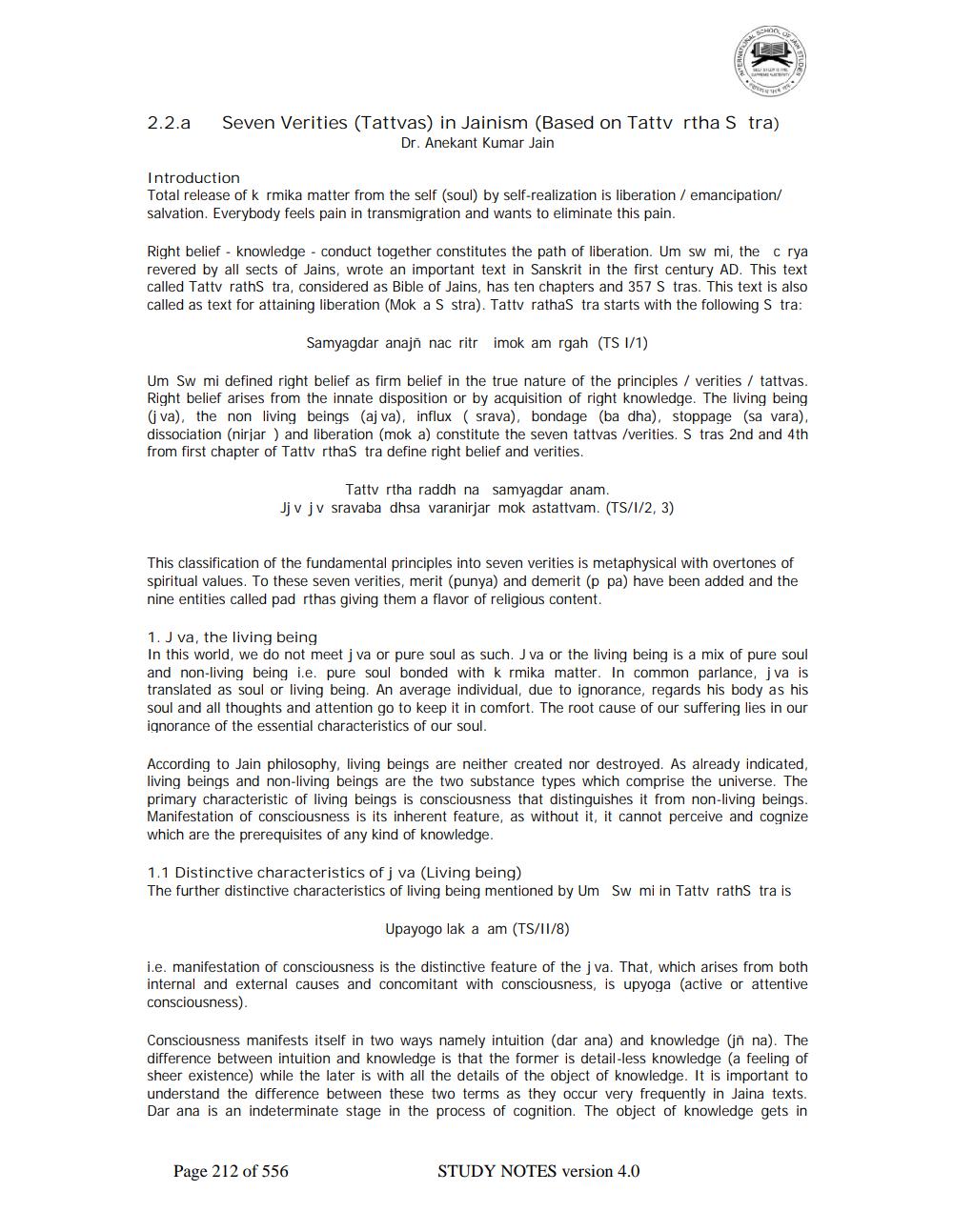________________
2.2.a
Seven Verities (Tattvas) in Jainism (Based on Tattv rtha S tra)
Dr. Anekant Kumar Jain
Introduction Total release of k rmika matter from the self (soul) by self-realization is liberation / emancipation/ salvation. Everybody feels pain in transmigration and wants to eliminate this pain.
Right belief - knowledge - conduct together constitutes the path of liberation. Um sw mi, the c rya revered by all sects of Jains, wrote an important text in Sanskrit in the first century AD. This text called Tattv raths tra, considered as Bible of Jains, has ten chapters and 357 S tras. This text is also called as text for attaining liberation (Mok a S stra). Tatty rathas tra starts with the following Stra:
Samyagdar anajn nac ritr
imok am rgah (TS 1/1)
Um Sw mi defined right belief as firm belief in the true nature of the principles/ verities / tattvas. Right belief arises from the innate disposition or by acquisition of right knowledge. The living being (i va), the non living beings (aj va), influx ( srava), bondage (ba dha), stoppage (sa vara), dissociation (nirjar ) and liberation (mok a) constitute the seven tattvas /verities. S tras 2nd and 4th from first chapter of Tattv rthas tra define right belief and verities.
Tattv rtha raddh na samyagdar anam. Jj v jv sravaba dhsa varanirjar mok astattvam. (TS/1/2, 3)
This classification of the fundamental principles into seven verities is metaphysical with overtones of spiritual values. To these seven verities, merit (punya) and demerit (p pa) have been added and the nine entities called pad rthas giving them a flavor of religious content.
1. J va, the living being In this world, we do not meet j va or pure soul as such. J va or the living being is a mix of pure soul and non-living being i.e. pure soul bonded with k rmika matter. In common parlance, jva is translated as soul or living being. An average individual, due to ignorance, regards his body as his soul and all thoughts and attention go to keep it in comfort. The root cause of our suffering lies in our ignorance of the essential characteristics of our soul.
According to Jain philosophy, living beings are neither created nor destroyed. As already indicated, living beings and non-living beings are the two substance types which comprise the universe. The primary characteristic of living beings is consciousness that distinguishes it from non-living beings. Manifestation of consciousness is its inherent feature, as without it, it cannot perceive and cognize which are the prerequisites of any kind of knowledge.
1.1 Distinctive characteristics of j va (Living being) The further distinctive characteristics of living being mentioned by Um
Sw mi in Tattv raths tra is
Upayogo lak a am (TS/11/8)
i.e. manifestation of consciousness is the distinctive feature of the j va. That, which arises from both internal and external causes and concomitant with consciousness, is upyoga (active or attentive consciousness)
Consciousness manifests itself in two ways namely intuition (dar ana) and knowledge in na). The difference between intuition and knowledge is that the former is detail-less knowledge (a feeling of sheer existence) while the later is with all the details of the object of knowledge. It is important to understand the difference between these two terms as they occur very frequently in Jaina texts. Dar ana is an indeterminate stage in the process of cognition. The object of knowledge gets in
Page 212 of 556
STUDY NOTES version 4.0




